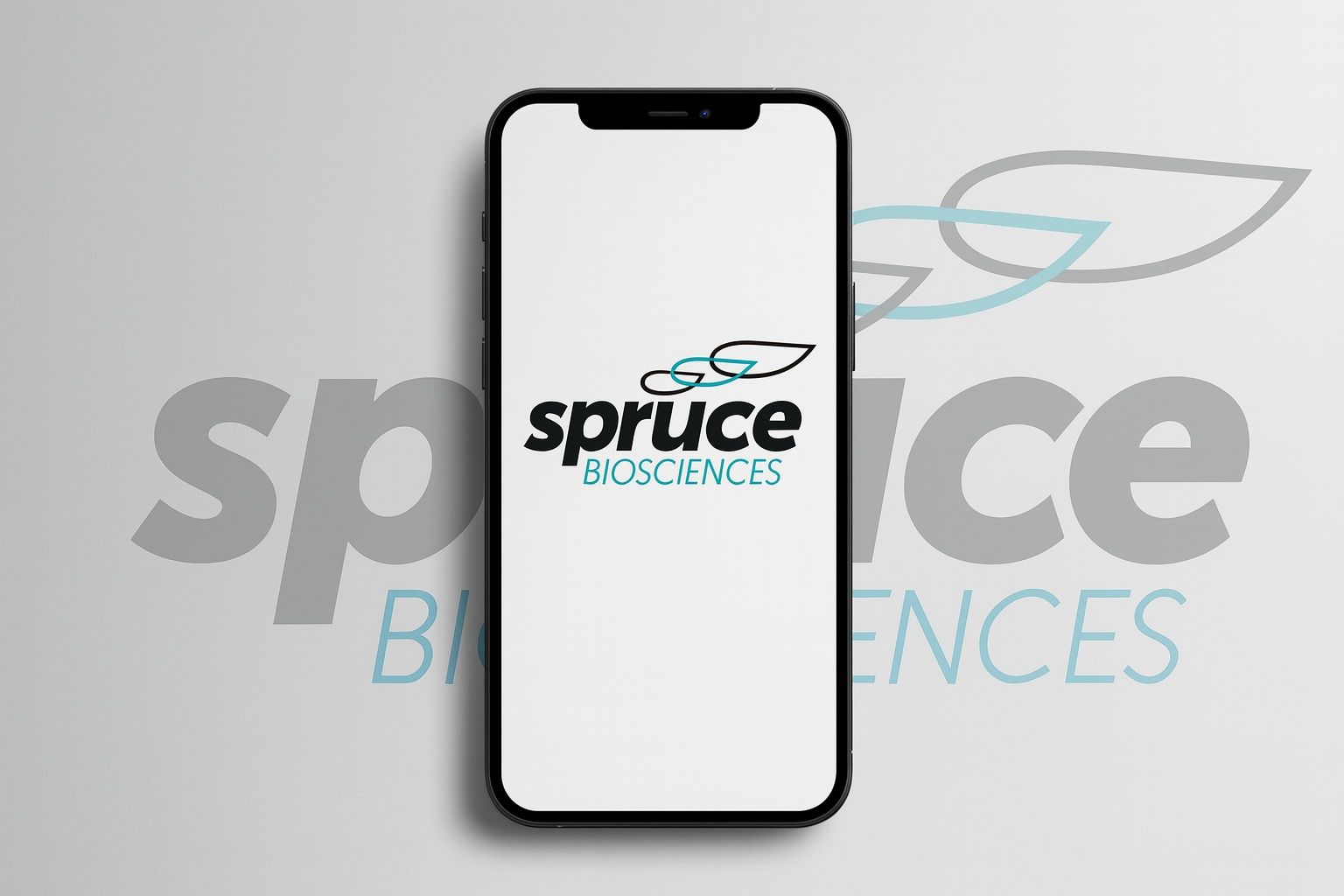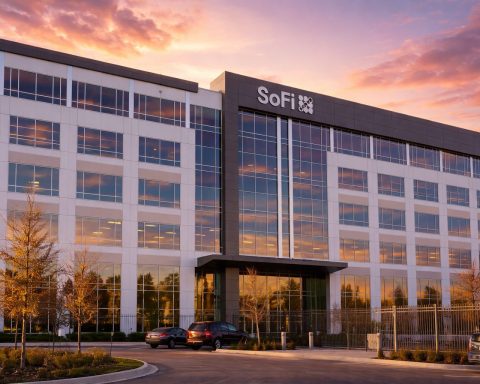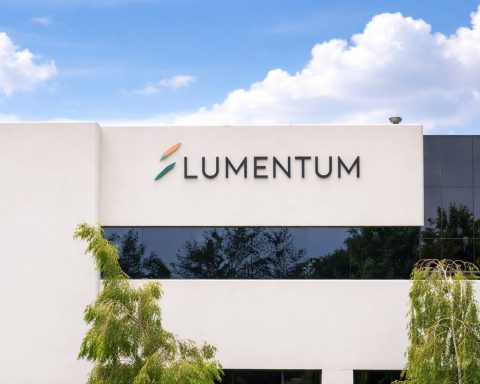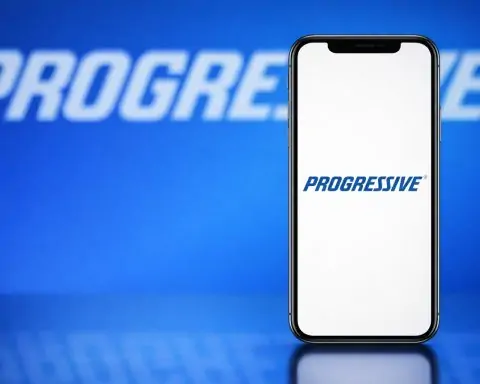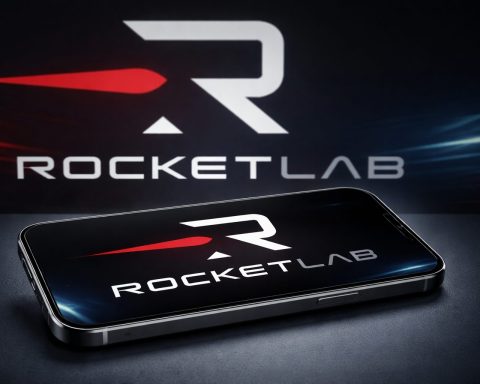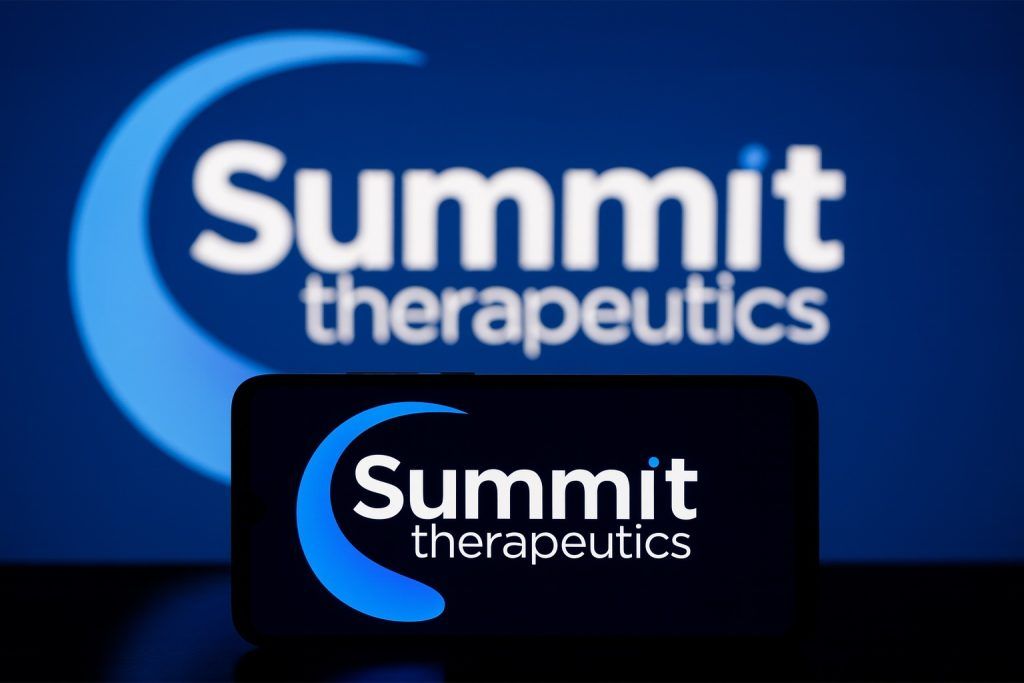What to Know Before Markets Open on October 20, 2025
- Historic Spike: Spruce Biosciences’ stock (NASDAQ: SPRB) surged by over 1,300% in a single session on October 6, 2025, rocketing from around $8 to roughly $130 after the company announced a major FDA Breakthrough Therapy Designation for its lead drug [1]. (Prior to this news, SPRB was trading at just $8.82 per share – about a $4.8 million market cap – underscoring how dramatic the jump was [2].)
- FDA Breakthrough for Rare Disease: The FDA granted Breakthrough Therapy Designation (BTD) to Spruce’s investigational enzyme therapy tralesinidase alfa (TA-ERT) for Sanfilippo Syndrome Type B, a rare and fatal pediatric neurological disorder with no approved treatments [3]. This coveted status accelerates the drug’s development and review process with intensive FDA guidance [4]. Spruce plans to file for FDA approval (a Biologics License Application, BLA) by Q1 2026 under the expedited pathway [5].
- Funding Boost: Riding the post-breakthrough momentum, Spruce raised $50.0 million in a private placement to bankroll TA-ERT through its FDA submission and potential launch. The financing (closing Oct 9, 2025) provides capital to advance TA-ERT into a possible U.S. commercial launch by late 2026 [6]. Investors in the deal purchased shares at $68, reflecting confidence in Spruce’s program despite significant dilution [7].
- Soaring Share Price & Volatility: As of October 19, 2025, SPRB trades around the mid-$150s per share, still dozens of times higher than pre-rally levels. The stock’s 52-week range of $4.28 to $240 illustrates its extreme volatility [8]. After hitting an intraday peak (with a 1,378% gain) on the breakthrough news, some pullback ensued, but shares remain dramatically up on the year [9]. Traders should expect wild swings, typical for a micro-cap biotech suddenly in the spotlight.
- Analyst Sentiment Mixed: Wall Street analysts are divided on SPRB’s outlook. Zacks Research recently upgraded Spruce from Hold to “Strong Buy,” signaling optimism [10]. In contrast, Weiss Ratings reaffirmed a “sell (D-)” rating [11]. Overall, the consensus remains cautious at “Hold,” with an average price target ~$131 – notably below the current price [12]. This reflects both the drug’s potential and the company’s high risks.
- Bold Forecasts vs. Caution: The breakthrough has attracted attention beyond typical analysts. Notorious biotech investor Martin Shkreli (the “Pharma Bro”) disclosed a long position and boldly predicted SPRB could reach $500, calling Spruce’s therapy likely to become “the new standard of care” [13]. However, other observers urge caution, noting that “fundamentals don’t change overnight” for this cash-strapped company [14]. The upside is real if Spruce’s drug succeeds, but so are the risks if execution falters.
FDA Breakthrough News Ignites Rally
Spruce Biosciences’ meteoric rise began with a game-changing regulatory win. On October 6, the company announced that the FDA had granted Breakthrough Therapy Designation (BTD) to its lead drug, tralesinidase alfa (TA-ERT) [15]. TA-ERT is an experimental enzyme replacement therapy targeting Sanfilippo Syndrome Type B (also known as MPS IIIB) – a rare, inherited lysosomal storage disease that causes severe neurological decline in children [16]. The FDA’s BTD endorsement signals that early data for TA-ERT show “substantial improvement” over existing options for this deadly disease, and it unlocks special support to speed the drug’s development. In practical terms, a Breakthrough designation means Spruce will receive expedited FDA guidance and priority review for TA-ERT, potentially shaving years off the approval timeline [17] [18]. Spruce’s CEO Javier Szwarcberg hailed the designation as “validation of TA-ERT’s potentially transformative clinical impact,” and confirmed the company is on track to submit a full approval application in the first quarter of 2026 [19] [20]. If regulators agree, TA-ERT could become the first-ever approved therapy for Sanfilippo Syndrome Type B, offering hope to affected families.
News of the FDA breakthrough instantly galvanized investors. SPRB had been a tiny micro-cap stock – essentially off the market’s radar – prior to October. (In fact, Spruce’s shares closed at just $8.82 on October 3 [21], reflecting a market value under $5 million.) The BTD announcement flipped that script overnight. When trading opened on Oct. 6, SPRB gapped up massively, and frenzied buying led to multiple trading halts as the price soared. By midday, the stock had exploded from the single digits to around $31 per share (a ~250% intraday jump) [22]. Incredibly, the rally only intensified into the afternoon – by the end of the day, Spruce closed near $130 per share, up 1,378% in one session [23]. This historic one-day gain instantly ranks among the year’s most eye-popping stock moves. It also catapulted Spruce’s market capitalization from under $5 million to tens of millions of dollars in mere hours [24]. Such a dramatic surge underscores the market’s enthusiasm for Spruce’s news, but it also reflects the tiny float and speculative fervor often seen in small biotech stocks when a positive catalyst hits.
Stock Price: From Micro-Cap to Triple-Digits
The dramatic turnaround in Spruce’s stock price is even more remarkable given its struggles earlier this year. In April 2025, Spruce lost its Nasdaq listing after its share price sank below the exchange’s minimum requirements [25]. The company’s first drug program had failed (more on that below), and SPRB was languishing in penny-stock territory. To regain compliance, Spruce undertook a 1-for-75 reverse stock split in August 2025, drastically reducing its share count and boosting the trading price [26]. This move paid off: by mid-September, SPRB resumed trading on the Nasdaq, escaping the over-the-counter “OTC” markets and restoring some investor confidence [27]. Still, even after relisting, Spruce’s stock hovered in the high-single digits per share in late September [28] – a reflection of the company’s near-obscurity and the biotech sector’s wary sentiment at the time.
All that changed with October’s breakthrough news. Spruce’s stock — once a nano-cap afterthought — suddenly found itself trading in the triple digits. After peaking around $130+ on Oct. 6, SPRB saw continued volatile swings: the next day, shares nearly doubled again in pre-market trading as high-profile investor Martin Shkreli revealed his stake and uber-bullish outlook [29]. That feeding frenzy was followed by bouts of profit-taking; at one point in the days after the news, SPRB pulled back from its highs (the company even priced a financing at $68 per share, see below). Yet by mid-October, the stock stabilized in the $150–$160 range [30]. To put this into perspective, Spruce’s 52-week low was $4.28 and its high was $240 (hit during the wild post-news swings) [31]. Even at ~$155 per share recently, SPRB is up astronomically from where it started the month. The company’s market cap now sits around $88 million [32] – still modest in absolute terms, but a far cry from the sub-$5M valuation it had days before the breakthrough.
Such extreme volatility is typical for a small biotech with a sudden breakthrough. Analysts note that tiny floats and momentum trading can lead to outsized price reactions on good news [33]. Spruce’s stunning rally is a case in point: it exemplifies how quickly sentiment can swing when a “lottery ticket” biotech finally gets positive news [34]. However, sustaining these gains will require follow-through. The biotech world is “littered with examples of small stocks that pop on news only to drift down afterward if no further catalysts occur,” one analysis cautioned [35]. In Spruce’s case, the upcoming months will test whether it can turn this speculative surge into lasting shareholder value. For now, everyday investors should be prepared for wide price swings – with SPRB’s share price capable of jumping or dropping by double-digits in a single day as hype and reality continue to tussle.
Financing Secured for Rare Disease Push
Spruce Biosciences wasted no time leveraging its soaring stock to bolster its balance sheet. On October 8, the company announced a $50.0 million private placement financing – essentially a direct sale of stock to institutional investors – aimed at funding TA-ERT’s final leg of development [36]. According to Spruce, the infusion of cash will carry TA-ERT through its BLA submission in Q1 2026 and even support initial U.S. commercial launch preparations by late 2026, should the drug be approved [37]. In other words, this financing gives Spruce a much-needed runway to get its therapy across the finish line at the FDA and start rolling it out to patients. The deal is expected to close by Oct. 9, 2025, pending customary conditions [38].
The financing’s terms shed light on how institutional investors view Spruce post-breakthrough. The investors agreed to purchase Spruce’s stock at $68.00 per share, with some also taking equivalent-price warrants (options) in lieu of common shares [39]. That pricing represented a significant discount to where SPRB was trading immediately after the FDA news (shares were still well over $100 at one point). The discount suggests new investors drove a hard bargain, possibly anticipating high volatility ahead. Nonetheless, raising $50M is a big win for Spruce – especially considering that just a few weeks prior, the entire company was worth only a fraction of that amount.
This cash injection was absolutely critical for Spruce. As of mid-2025, the company’s finances were perilously low: it had about $16.4 million in cash on June 30, enough to fund operations only through the end of 2025 [40]. Management had already taken drastic steps to conserve money, including a 55% workforce reduction in April 2025 [41]. Those cuts, along with halting its previous program, trimmed Spruce’s quarterly burn rate substantially (the Q2 2025 net loss was just $2.1M, down from $9.2M a year prior) [42]. But with virtually no revenue coming in – Spruce has only made about $1.3M in the past three years, all from partnership milestones [43] – it was clear the company would need fresh capital to survive beyond this year. The Breakthrough designation gave Spruce a window of opportunity to raise funds at a far higher stock price, minimizing dilution compared to what it would have faced earlier. By securing $50M now, Spruce has bought itself time and credibility: it should have the resources to navigate the FDA approval process for TA-ERT and even begin building out its commercial infrastructure (such as engaging with specialists, ramping up manufacturing, etc.). Executives indicated the money will indeed go toward BLA filing prep and initial launch plans for the Sanfilippo B program [44].
Of course, financing risk hasn’t disappeared entirely. Biotech experts note that Spruce may still need additional capital before TA-ERT can reach the market, especially if there are any delays or if the company opts to commercialize the drug on its own [45] [46]. $50 million is a sizable sum for Spruce, but developing and launching even a rare disease therapy can easily consume that amount and more. The good news is that the recent rally, if maintained, puts Spruce in a much stronger position to raise money on favorable terms. As one analysis observed, “the higher [SPRB’s] stock price can remain – the more money Spruce can raise per share issued,” meaning less dilution for existing shareholders [47]. Spruce could also pursue non-dilutive funding; for instance, the company might secure grants or partnerships (sometimes rare disease programs attract support from foundations or bigger pharma). To that end, there’s already speculation that Spruce’s asset could draw interest from larger companies as a buyout or licensing target (more on that later). For now, Spruce has stabilized its cash situation and proven it can access capital markets – a vital achievement for a firm that was on the brink only months ago.
Analysts and Experts Split on Outlook
The astonishing surge in Spruce’s stock has left analysts and market watchers sharply divided on what comes next. On one side, some see Spruce as an emerging success story in rare-disease biotech, with significant upside remaining if the drug crosses the finish line. On the other, skeptics point to the company’s lingering challenges – from funding to execution – and warn that the current valuation may be hard to justify. This divergence is evident in recent analyst ratings. Late last week (Oct. 18), Zacks Research upgraded SPRB from Hold to “Strong Buy,” a vote of confidence that followed the FDA news and Spruce’s financing [48]. Zacks’ bullish turn suggests that at least some research analysts believe Spruce’s risk/reward profile has improved markedly, perhaps due to the de-risking of TA-ERT and the new cash on hand.
However, not all analysts are convinced. In the same week, Weiss Ratings (an investment ratings firm) reaffirmed its “Sell (D-)” rating on Spruce [49]. And according to MarketBeat data, 6 other analysts still have Hold ratings, with one other Sell – making the overall Wall Street consensus a tepid “Hold” despite Spruce’s breakthrough [50]. Before the recent events, virtually every analyst covering Spruce had rated it a Hold, largely due to the uncertainties surrounding its pipeline. Now, even with the FDA catalyst, most are maintaining caution. The average price target for SPRB is around $131 per share, per MarketBeat, which is actually below the current trading price (~$157) [51]. This implies that, in analysts’ view, Spruce’s stock may have gotten ahead of itself, at least relative to near-term fundamentals.
The rationale behind the caution is straightforward: Spruce still has a lot to prove. Analysts acknowledge the “transformative potential” of TA-ERT and the huge share-price gain it sparked, but they also highlight Spruce’s cash constraints and execution risks as major concerns [52]. In essence, while the FDA’s blessing increases confidence in the science, Spruce remains a tiny company that must navigate regulatory review, manufacturing, and commercialization in uncharted territory. Any misstep could be costly. As a result, many professional observers are hedging their bets – impressed by TA-ERT’s promise, yet aware that the road to actually treating patients (and generating revenue) is still under construction.
Meanwhile, outside experts and investors are weighing in with their own takes – some optimistic, some skeptical. Perhaps the most attention-grabbing commentary came from Martin Shkreli, the controversial former pharma executive known as the “Pharma Bro.” Shkreli announced on social media that he had taken a long position in SPRB and was extremely bullish on TA-ERT’s prospects [53]. He predicted that the treatment “will be approved” and become “the new standard of care” for Sanfilippo syndrome, and even forecast that Spruce’s stock could hit $500 per share [54]. (Notably, Shkreli did not give a timeline for this sky-high target.) Shkreli’s endorsement – coming from someone with a deep biotech background, albeit an infamous reputation – added fuel to the speculative frenzy earlier this month. It suggests that some seasoned biotech investors see much more upside if Spruce succeeds in bringing TA-ERT to market.
On the flip side, many veteran biotech watchers urge measured expectations. The phrase “fundamentals don’t change overnight” has been circulating in online forums and commentary [55], reminding traders that despite the breakthrough news, Spruce is still far from profitability and will likely face further dilution or partnership dependency. Some analysts note that Spruce’s market opportunity, while meaningful, is inherently limited by the tiny patient population – even with a high price tag per treatment, the company will never have a multi-billion-dollar revenue stream from a few hundred patients a year. Others point out that execution is key: “Spruce might own 100% of [this] niche market, but must also build that market from scratch,” one analysis emphasized [56]. In other words, no matter how effective TA-ERT is, Spruce will have to identify patients, convince physicians and insurers, and possibly establish infrastructure to deliver a novel enzyme therapy to children – all heavy lifts for a small firm.
Could Spruce become a takeover target? This question is also on the table among experts. Given Spruce’s one-of-a-kind asset and the intense interest from larger pharmaceutical companies in rare disease treatments, some speculate that Spruce might not go the journey alone. “Some see Spruce as a possible acquisition target, particularly if TA-ERT’s approval looks likely,” notes TechStock² (TS2.tech), highlighting that big pharma is sitting on record cash reserves and actively hunting for promising pipeline assets [57] [58]. The fact that TA-ERT addresses an ultra-rare pediatric disease – an area eligible for valuable FDA incentives – could make Spruce even more attractive to a suitor. (For instance, upon TA-ERT’s approval, Spruce would earn a Rare Pediatric DiseasePriority Review Voucher, which can be sold to another company. Recent vouchers have sold for around $100 million apiece [59], a windfall that by itself could exceed Spruce’s current market cap.) This kind of potential “bonus” adds intrigue to Spruce’s story. If a larger biotech or pharma believes in TA-ERT, they might consider acquiring Spruce outright to obtain the drug (and that voucher) – giving Spruce’s investors an earlier exit at a possibly higher price. However, there’s no indication of any concrete offers yet, and Spruce’s low institutional ownership (~5%) suggests most “smart money” investors are still on the sidelines [60] [61].
In summary, sentiment on SPRB is polarized. Bulls argue that Spruce’s tiny valuation (still under $100M) doesn’t reflect the breakthrough value of its drug nor the lucrative incentives it carries, leaving room for further stock appreciation if milestones are hit. Bears counter that the stock’s 1,000%+ spike has already priced in a lot of optimism, and that Spruce’s hurdles – raising more money, passing FDA scrutiny, and eventually selling the drug – justify a very cautious stance. The next few months of news (or lack thereof) will likely sway these opinions one way or the other.
Clinical Trials and Pipeline Developments
Spruce Biosciences’ recent triumph with TA-ERT comes after a significant strategic pivot. Up until late 2024, the company was primarily focused on a different drug: tildacerfont, a treatment for the endocrine disorder congenital adrenal hyperplasia (CAH). Tildacerfont was in Phase 2 trials and had shown some promise, but in late 2024 a key Phase 2b study failed to meet its goals [62]. This setback was devastating – Spruce’s lead program essentially collapsed, and with it, much of the company’s perceived value. Spruce halted the CAH program and was left scrambling for a new direction as its stock price plummeted (this was the period that led to the Nasdaq delisting earlier this year).
In April 2025, Spruce executed a bold turnaround plan: it acquired TA-ERT from Biomarin Pharmaceutical and refocused its entire strategy on this ultra-rare disease therapy [63]. TA-ERT (tralesinidase alfa) is a recombinant form of an enzyme (NAGLU) that Sanfilippo Type B patients lack. Unlike CAH, which is a larger indication, MPS IIIB (Sanfilippo B) is an extremely rare condition – but one with a dire unmet need, as affected children experience progressive brain damage and early death. TA-ERT is designed to be delivered directly into the central nervous system (through a spinal infusion) to replace the missing enzyme and clear out toxic metabolic buildup in the brain [64]. Prior studies (conducted by the drug’s previous developer) provided up to five years of follow-up data in treated patients, suggesting that TA-ERT can normalize key biomarkers (like heparan sulfate levels in cerebrospinal fluid) and stabilize cognitive function and brain volume in children with Sanfilippo B [65]. These striking results are what caught the FDA’s attention. In granting BTD, the agency specifically noted the “profound” biomarker response and agreed that this is “reasonably likely to predict clinical benefit,” potentially allowing approval based on the surrogate biomarker rather than waiting for long-term clinical outcomes [66]. For a disease as urgent as Sanfilippo (where patients often don’t survive beyond their teens), this is a critical concession – it could shave years off the time to get the drug to patients [67].
Besides Breakthrough status, Spruce’s TA-ERT program already holds a full deck of FDA incentives. The drug has been granted Fast Track, Orphan Drug, and Rare Pediatric Disease designations in both the U.S. and EU [68]. These designations confer perks like fee waivers, tax credits, and in the case of Orphan status, 7 years of market exclusivity upon approval. The Rare Pediatric tag, as mentioned, makes Spruce eligible for that priority review voucher post-approval (vouchers that are highly coveted in the pharma industry and can be sold for large sums [69]). Collectively, these incentives underscore that TA-ERT is a unique program addressing a critical, underserved illness – exactly the kind of drug regulators and society want to see advanced. Spruce is currently preparing its Biologics License Application (BLA) for TA-ERT, aiming to file in early 2026 [70]. Given the Breakthrough designation, the FDA is likely allowing a rolling submission (where parts of the BLA are submitted and reviewed as they’re completed, rather than waiting for the entire package). If all goes smoothly, Spruce could potentially receive a decision on approval by late 2026, especially if priority review is granted (which shortens the FDA review to 6 months) [71].
It’s worth noting that Spruce hasn’t completely abandoned tildacerfont, the earlier drug – they’ve just de-prioritized it. In an interesting twist, Spruce found a partner to explore tildacerfont in a very different condition: Major Depressive Disorder (MDD). In mid-2025, Spruce inked a collaboration with HMNC Brain Health to test tildacerfont in a Phase 2 trial for a subset of depression believed to be linked to endocrine dysfunction [72] [73]. This move allows Spruce to potentially extract some value from tildacerfont without shouldering the cost (HMNC is running the trial). It’s essentially a low-risk “side bet” – if tildacerfont shows efficacy in this niche of MDD, Spruce could benefit down the line. However, Spruce’s management has made it clear that TA-ERT for Sanfilippo is now the company’s main focus and the cornerstone of its future. All current resources and attention are on executing the MPS IIIB program, as the stakes couldn’t be higher: success would not only transform Spruce as a company but also deliver the first treatment for a heartbreaking pediatric illness.
Broader Biotech Sector Context
Spruce’s roller-coaster journey is unfolding against a backdrop of volatility in the biotech sector overall. For the past few years (since 2022), small-cap biotech companies like Spruce have been mired in a brutal bear market, hit by investors’ “risk-off” attitude, rising interest rates, and a drought of funding for early-stage drug developers [74]. By late 2024, there were some glimmers of hope – the biotech indices had started to tick up modestly – but investor confidence remained shaky. The environment in 2025 has been one of cautious optimism: investors are slowly returning to biotech, but they’ve become a lot more selective [75]. In particular, money has flowed toward “asset-centric” biotech plays – meaning companies with one highly promising drug – especially in areas like rare diseases or targeted cancers [76]. Spruce fits this mold perfectly: it has essentially become a one-drug company centered on TA-ERT, which is the kind of focused story some biotech investors currently favor. A recent survey by Raymond James (as cited in Pharmaceutical Executive) noted that rare disease programs are attracting keen interest, whereas broader programs without clear niches are being overlooked [77]. By pivoting from a more common endocrine disorder (CAH) to an ultra-rare pediatric neurological disease, Spruce inadvertently aligned itself with what the market wants to see – a clear, singular value proposition.
Another macro trend benefiting Spruce is the uptick in biopharma mergers and acquisitions (M&A). Large pharmaceutical companies are facing patent cliffs on blockbuster drugs and are armed with record cash reserves (over $1.6 trillion collectively, by one estimate) [78]. Big Pharma has been actively scouting for innovative pipeline assets to buy or license, rather than developing everything in-house. In this climate, a tiny company that owns a de-risked, late-stage orphan drug like Spruce does can become a prime takeover target [79]. Spruce’s recent Nasdaq relisting and surge above compliance thresholds may also help in this regard, as it increases visibility and makes institutional investment easier. Several industry analysts have speculated that if Spruce’s upcoming data and regulatory steps remain positive, the company could attract partnership offers or even a buyout bid from a larger biotech that sees strategic value in TA-ERT [80]. Importantly, Spruce’s drug addresses a high-need niche with regulatory perks, and any acquirer would stand to gain not just the drug but also that likely Priority Review Voucher worth ~$100M [81]. For a big pharma acquirer, that voucher alone is a sweetener that can be used on one of their own drugs or sold. These factors put Spruce on the M&A radar in a sector where, lately, “buying innovation” has been a key growth strategy for the pharma giants.
That said, the overall mood in biotech remains cautious. The burst of speculative trading around SPRB doesn’t necessarily herald a broader bull market for all biotechs. Investors are still leery of companies with tenuous finances or long development timelines. Spruce’s extraordinary rally is somewhat of an outlier, enabled by a perfect storm of a compelling news catalyst and an ultra-low starting valuation. It shows that in biotech, clear clinical wins (like an FDA Breakthrough designation) can still ignite euphoric responses [82]. But to keep investors interested, Spruce – like others – will need to deliver actual results (filing the BLA on time, securing approval, etc.). In the current climate, generalist investors tend to “reward only clear clinical breakthroughs,” and then expect progress to continue [83]. The days of biotech stocks climbing on hype alone are largely over; tangible milestones are a must to sustain rallies.
In summary, Spruce’s surge comes at a time when sentiment for small biotechs is improving from rock-bottom, yet selectivity is high. Spruce checks some key boxes – a unique asset, regulatory green lights, a plausible fast route to market – which is why it has stood out. But as a micro-cap with limited resources, it also embodies the sector’s classic risks. Its story illustrates both the enormous upside biotech breakthroughs can create (for patients and investors alike) and the inherent volatility of the space. Spruce’s challenge now is to convert that initial burst of enthusiasm into lasting momentum, in a market environment that will quickly penalize any stumbles.
Outlook: High Risks, High Hopes
Looking ahead, Spruce Biosciences stands at a make-or-break moment. The next 12–18 months will determine whether this little biotech can truly capitalize on its breakthrough and reward those who jumped onboard during the rally. On the optimistic side, Spruce’s trajectory has never looked brighter. The FDA’s Breakthrough designation has, in effect, validated the science behind TA-ERT and significantly raised the likelihood of eventual approval. Spruce is already moving full-steam toward a BLA filing in Q1 2026 [84]. If it manages to submit on schedule, that will be a major achievement, signaling that the company has its data and manufacturing package in order. Approval could then follow by late 2026, assuming priority review – which is relatively soon in biotech terms [85]. Should TA-ERT win FDA approval, Spruce would go from a pre-revenue R&D outfit to the owner of a first-to-market therapy for a devastating rare disease. Even with only a few hundred patients in the U.S., annual treatment costs for similar ultra-rare conditions often reach six or seven figures, meaning revenue in the tens of millions of dollars per year is possible [86]. Spruce would also receive a Priority Review Voucher upon approval, which (as discussed) could be sold for on the order of $100 million [87] – potentially more than what the entire company is valued at today. These factors underscore why some investors are so excited: if all goes well, Spruce’s current valuation could be dwarfed by its future prospects as a commercial-stage company. There’s even the possibility that a bigger player steps in with a buyout offer in the meantime, crystallizing gains sooner.
However, no biotech story is without risks, and Spruce has plenty of hurdles ahead. The most immediate is what we might call “execution risk.” Spruce must successfully compile a complex BLA for a novel enzyme therapy – a task that involves not just clinical data but also demonstrating to FDA that it can manufacture the drug consistently and safely. Enzyme biologics are tricky; any hiccup in production quality or shelf-life could raise questions [88]. The FDA will undoubtedly scrutinize the BLA, and while Breakthrough status helps, it’s not a guarantee of approval. If regulators ask for additional data or a broader study (for example, confirming long-term outcomes), that could delay approval and strain Spruce’s resources [89]. Regulatory surprises are common in biotech, and Spruce cannot afford many.
Another looming issue is commercialization. Assuming TA-ERT is approved, Spruce will face the challenge of launching a drug for an ultra-rare disease largely on its own. Typically, small biotechs in this position either partner with a larger company or build a niche marketing effort focused on the few specialist centers that treat the condition. Spruce has not yet announced its commercialization strategy. Going it alone would mean recruiting a small specialty sales force and support team – which would require more capital – but it would allow Spruce to retain all future profits. Partnering, on the other hand, could bring in an upfront payment and resources (for example, a partner might handle ex-U.S. markets), at the cost of sharing revenue [90]. Investors will be watching closely to see which path Spruce chooses. It’s possible that as the BLA filing approaches (or shortly after), Spruce could strike a commercialization partnership to help shoulder the burden. If not, the company might need yet another cash raise to fund the launch efforts, which could dilute shareholders further.
Finally, Spruce’s financial juggling act is not over. The recent $50M financing was crucial, but as noted, it may not carry the company all the way through a 2026 approval and beyond. Spruce will have to carefully manage its cash burn in the interim. The higher the stock price stays, the better – it gives Spruce optionality to raise additional funds with less dilution if needed [91]. Conversely, if the stock falls significantly, raising money becomes harder again. This dynamic means that Spruce’s management has strong incentive to keep investors engaged and informed, and to hit their timelines. Any slip-ups – such as a delay in filing the BLA, or ambiguous trial updates – could erode the market’s trust and send shares swooning. As one commentator put it, at this stage SPRB is a high-risk, high-reward play, where the outcomes could be binary [92]. Either Spruce navigates the next steps and blossoms into a successful rare-disease company, or setbacks could see the stock retrace much of its gains.
For now, Spruce’s story has transformed from near-failure to one of unexpected revival. The coming quarters will be decisive. Investors and analysts will be looking for concrete progress: completion of the BLA filing (and any FDA feedback on it), updates on cash runway (perhaps in the Q3 earnings report), and signs of how Spruce plans to handle commercialization (partner vs. go-it-alone). Broader sector factors – like any resurgence in biotech M&A or changes in interest rates – could also influence Spruce’s fate. In the best case scenario, by this time next year Spruce could be awaiting an FDA decision with a solid bank account and possibly a partner in tow, in which case the current stock price might even prove justified or cheap. In the worst case, delays or cash troubles could return Spruce to penny-stock status.
In sum, Spruce Biosciences has captured lightning in a bottle with its FDA breakthrough and resultant stock surge. It now faces the tough task of turning that lightning into sustainable energy. The opportunity in front of Spruce – delivering a lifesaving therapy to children with no other hope – is as high-stakes as it gets, and the stock’s performance will likely mirror that all-or-nothing reality. For general investors, SPRB’s wild ride is a reminder of both the enormous potential and the significant peril inherent in biotech investing. Spruce has sprung back to life in 2025; the next chapters will reveal if it can keep the momentum and perhaps even make biotech history by conquering Sanfilippo Syndrome Type B.
Sources: Financial and biotech news reports including TS2.Tech [93] [94], Stocktwits News [95] [96], MarketBeat [97], official Spruce Biosciences releases [98], and other market data as cited above.
References
1. stocktwits.com, 2. ts2.tech, 3. stocktwits.com, 4. stocktwits.com, 5. stocktwits.com, 6. investingnews.com, 7. investingnews.com, 8. www.marketbeat.com, 9. stocktwits.com, 10. www.marketbeat.com, 11. www.marketbeat.com, 12. www.marketbeat.com, 13. stocktwits.com, 14. azat.tv, 15. ts2.tech, 16. stocktwits.com, 17. ts2.tech, 18. stocktwits.com, 19. azat.tv, 20. stocktwits.com, 21. ts2.tech, 22. ts2.tech, 23. stocktwits.com, 24. azat.tv, 25. ts2.tech, 26. ts2.tech, 27. ts2.tech, 28. ts2.tech, 29. stocktwits.com, 30. www.marketbeat.com, 31. www.marketbeat.com, 32. www.marketbeat.com, 33. ts2.tech, 34. ts2.tech, 35. ts2.tech, 36. investingnews.com, 37. investingnews.com, 38. investingnews.com, 39. investingnews.com, 40. ts2.tech, 41. ts2.tech, 42. ts2.tech, 43. ts2.tech, 44. investingnews.com, 45. ts2.tech, 46. ts2.tech, 47. ts2.tech, 48. www.marketbeat.com, 49. www.marketbeat.com, 50. www.marketbeat.com, 51. www.marketbeat.com, 52. ts2.tech, 53. stocktwits.com, 54. stocktwits.com, 55. azat.tv, 56. azat.tv, 57. ts2.tech, 58. azat.tv, 59. ts2.tech, 60. azat.tv, 61. ts2.tech, 62. azat.tv, 63. azat.tv, 64. azat.tv, 65. azat.tv, 66. azat.tv, 67. azat.tv, 68. ts2.tech, 69. ts2.tech, 70. stocktwits.com, 71. azat.tv, 72. ts2.tech, 73. azat.tv, 74. azat.tv, 75. azat.tv, 76. azat.tv, 77. ts2.tech, 78. ts2.tech, 79. azat.tv, 80. azat.tv, 81. ts2.tech, 82. azat.tv, 83. azat.tv, 84. stocktwits.com, 85. azat.tv, 86. ts2.tech, 87. ts2.tech, 88. ts2.tech, 89. ts2.tech, 90. ts2.tech, 91. ts2.tech, 92. ts2.tech, 93. ts2.tech, 94. ts2.tech, 95. stocktwits.com, 96. stocktwits.com, 97. www.marketbeat.com, 98. investingnews.com
